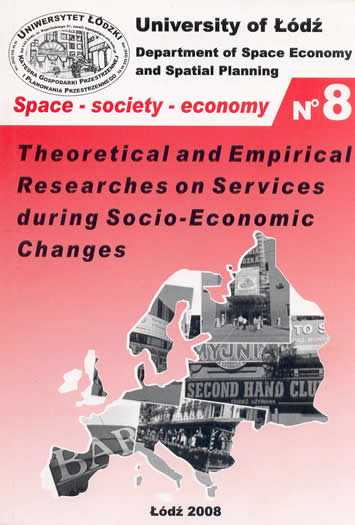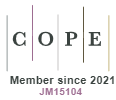Poziom rozwoju i struktura przestrzenna handlu detalicznego w Poznaniu
DOI:
https://doi.org/10.18778/1733-310.08.09Abstrakt
Over the last 15 years Poland has seen vigorous growth, both quantitative and qualitative, of retail outlets manifesting itself in the doubling of economic entities active in this sector of the economy. The development of retailing, especially in the biggest cities, means a gradual attainment of the West European quantitative standards (the number and floorspace of retail outlets). In the first part, the article discusses the stages and level of development of retail trade in Poznań as seen against the situation at home and abroad. Poznań is one of the cities with the best developed shopping network in Poland; the city gradually starts to display shop- -saturation indices similar to those in Western Europe. The other part of the article is devoted to the present-day size structure of retail outlets and their distribution in Poznań. Large-lot objects occupy 35% of the city’s shopping area, to exceed 50% in 2008 when the next investments have been completed. The characteristics of large shopping centres in the Poznań metropolitan area include a relatively small number of department stores in the downtown area, a decided concentration of hypermarkets in the densely populated residential quarters, no shopping centres in the sparsely populated peripheral quarters, and very occasional examples of greenfield investments. In an attempt to prevent deconcentration of shopping into the suburban zone, the Poznań authorities have allotted several plots of land in one of their planning documents, a Study of Spatial Development, to the building of shopping centres in the close proximity of the city’s downtown area. Then the trade policy of the city authorities will have to focus on ensuring a reasonable balance in the activity of traditional petty and large-lot retailing in Poznań.
Pobrania
Bibliografia
Bednarek R., Kaczmarek T., Kaczmarek U., Sieć handlowa miasta Poznania i jej ocena z punktu widzenia zaspokojenia potrzeb konsumentów i lokalizacji nowych obiektów handlowych, Dedal Invest-Eko, Urząd Miasta Poznania 2005, (praca niepublikowana).
Google Scholar
Domański T., Strategie rozwoju handlu, Polskie Wydawnictwo Ekonomiczne, Warszawa 2005.
Google Scholar
From Sao Paulo to Shanghai. New consumer dynamics: the impact on modern retailing, 2006/07. Price Waterhouse Coopers.
Google Scholar
Kaczmarek T., Development of retail trade in Poland: the case of city Poznań, [w:] Urban development, planning and governance in globalization, Sun Yay-Sen University Press, Guangzhou 2007.
Google Scholar
Kaczmarek T., Kaczmarek U., Stara i nowa przestrzeń handlowa Poznania, [w:] Nowe przestrzenie w mieście. Ich organizacja i funkcje. XIX Konwersatorium Wiedzy Mieście, (red) Jażdżewska I., Wydawnictwo Uniwersytetu Łódzkiego, Łódź 2006.
Google Scholar
Poole R., Clarke G. P., Clarke D. B., Growth, concentration and regulation in European food retailing, „European Urban and Regional Studies”, Vol. 9, No 2, 2002.
Google Scholar
DOI: https://doi.org/10.1177/096977640200900205
Tordjman A., European retailing, convergences, differences and perspectives, „International Journal of Retail and Distribution Management”, Vol 22, No 5, 1994.
Google Scholar
DOI: https://doi.org/10.1108/09590559410067299
Pobrania
Opublikowane
Jak cytować
Numer
Dział
Licencja

Praca jest udostępniana na licencji Creative Commons Attribution-NonCommercial-NoDerivatives 3.0 Unported License.









